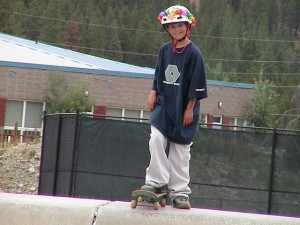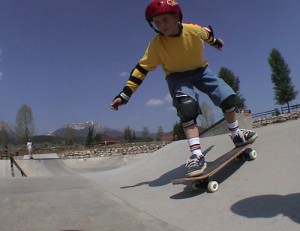
Skating’s gotta be fun. It’s playing. That’s why learning it is so unlike learning other sports, with the drills, practice, lessons and other stuff that’s more a part of school than a sport. In skateboarding, trial and error is a big part of learning, but that doesn’t mean coaching can’t be part of it.
The “error” in trial-and-error style learning is actually the best mind training there is. As Daniel Coyne talks about in “The Talent Code,” making small errors and detecting them is actually the best type of rehearsal and practice a person can do – whether it’s for a sport, a musical instrument, or any activity. By detecting small mistakes safely and re-trying multiple attempts at a movement, we train our brains to do it effortlessly. That’s the secret behind muscle-memory and true mastery.
In skateboarding, we learn how to fall safely, out of necessity.

